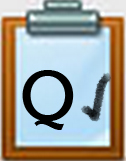Q1 Compare Products Introduction
Introduction
During this Quest, you will compare the specifications of different devices, compare product features, and select the best choice for your classroom based on features and cost.
I Can Statements
- be a responsible online consumer
- compare the pros and cons of various online products
Competencies & Standards
MITECS Michigan Integrated Technology Competencies for Students, and
2. Digital Citizen
a. Cultivate and manage their digital identity and reputation and are aware of the permanence of their actions in the digital world
b. Engage in positive, safe, legal and ethical behavior when using technology
3. Knowledge Constructor
c. Curate information from digital resources using a variety of tools and methods to create collections of artifacts or solving authentic problems
5. Computational Thinker
b. Collect data or identify relevant data sets
Websites and Documents
Websites
21t4s Videos
21t4s Documents & Quizzes




